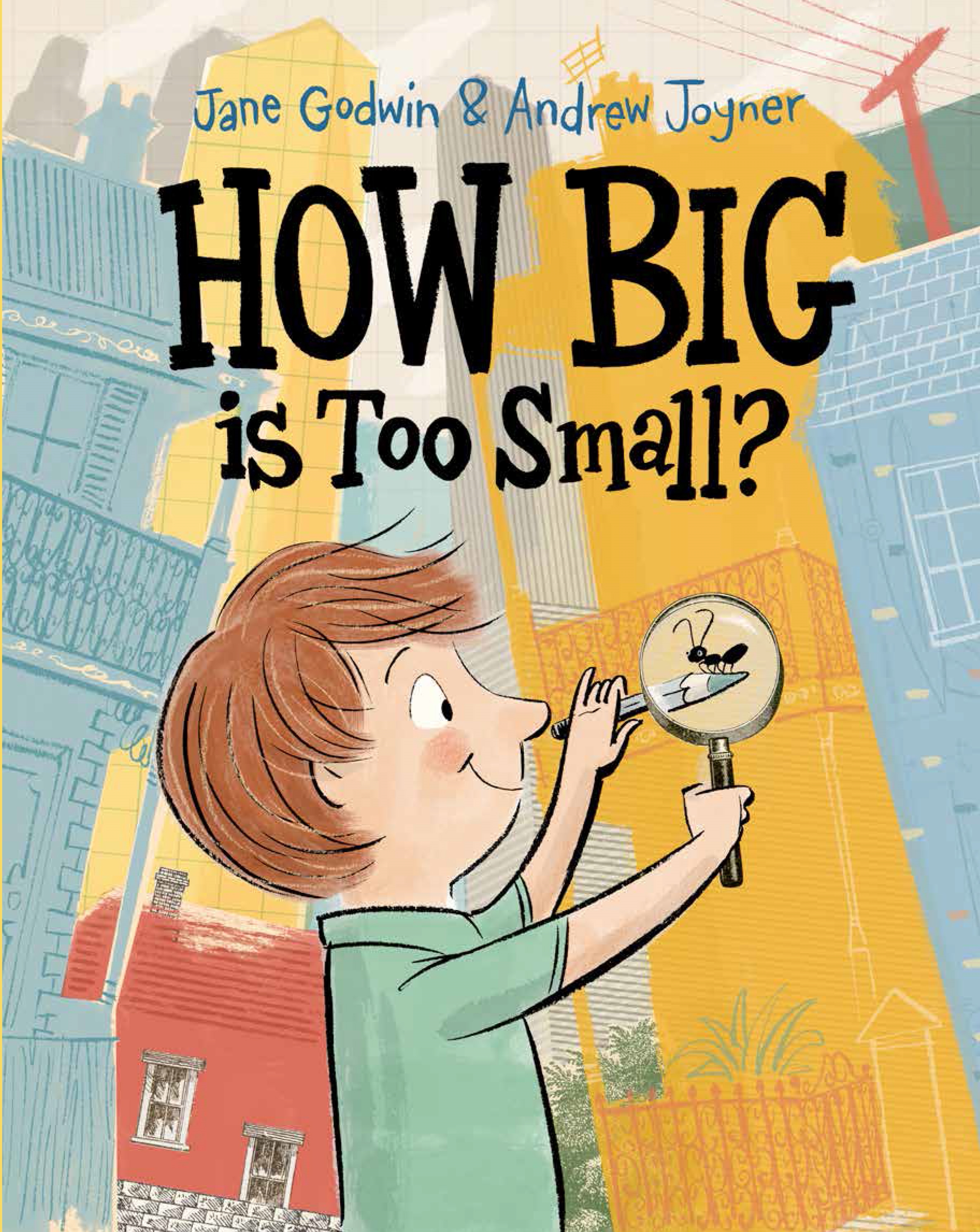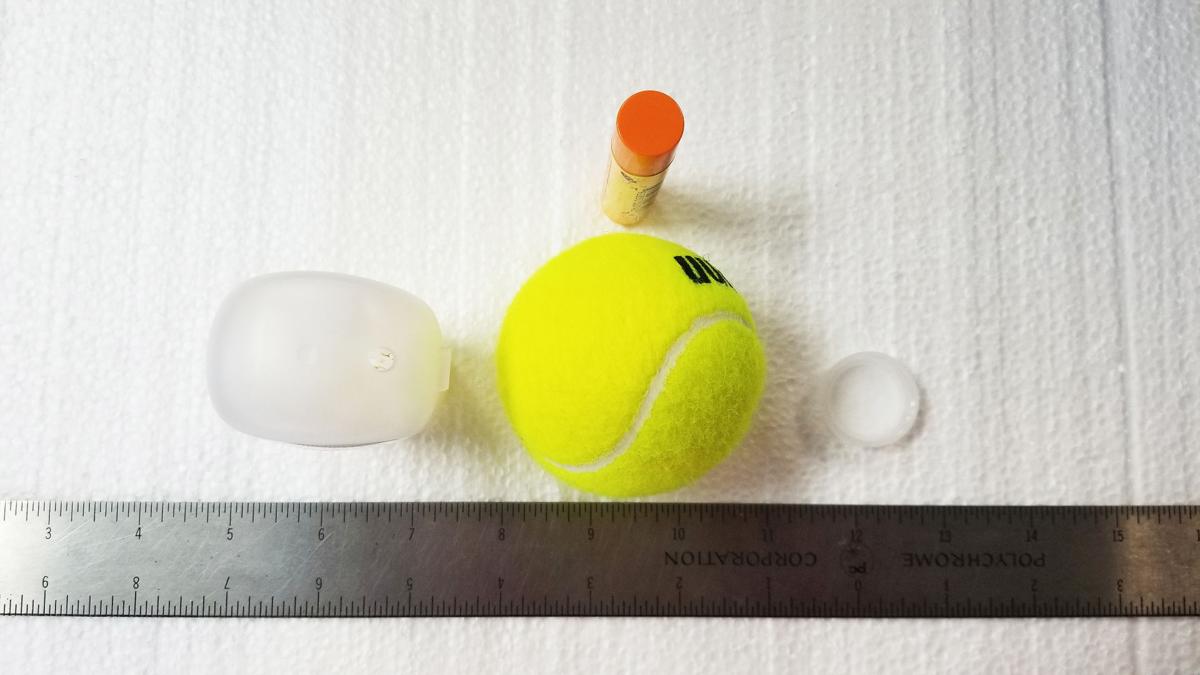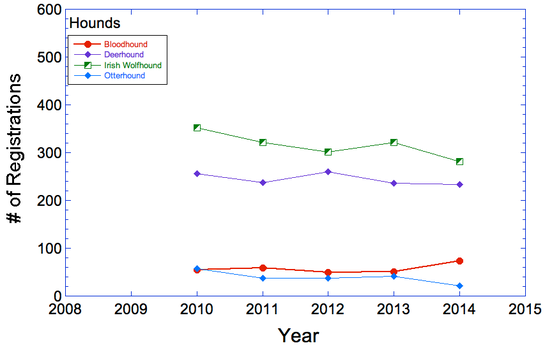how small is too small
 How Big is Too Small? by Jane Godwin - Penguin Books Australia
How Big is Too Small? by Jane Godwin - Penguin Books AustraliaAdvertisement How small is too small for small animals? Four species of terrestrial arthropods in forests of different sizes in Western agricultural Australia volume 8, pages709-726(1999) volume 8171 Access31 Citations3 AltmetricAbstract The theory of biogeography of the islands, and rule 50/500 of genetics, have effectively devalued fragments of small habitat for species conservation. The theory of metapopulation has given new value to small remnants, but data on the persistence of species are scarce. This study examined the capacity of very small and sheep-induced eucalyptus wood remnants in the region of Western agricultural Australia to support land-based arthropods dependent on mortal remains. We recognized 53 ingrained remnants of wandoo wheatbelt Eucalyptus capillosa for the presence of four species of arthropods with different strategies of dispersal (terrestrial versus aerial) and diet (predaceous vs. herbivorous): the harvester and the construction of Drepanotermes tamminensis, ninaceae wood-scorpion All species with the exception of the scorpion are dispersed aerially, and all build structures on land that are easily recognized. The remnants ranged from 50 m2 to 21 000 m2 (average 1791 m2), in spatial isolation (distance to the nearest vegetable remnant) from 10 m to 500 m (average 123 m) and in a ratio of length to width (form) of circular (media ratio 1.0) to linear (average ratio 4.0). The observations of the small and pasted remains were compared with observations made in six wandoo wood sites within a large (1040 ha) and ingrate remains. The total number of target species was very correlated with the remaining area (r = .68). Remanent isolation and the form of remnant had no apparent influence on the total number of target species. The minimum area of grazing remains in which individual species were recorded followed the large predator Urodacus armatus (4515 m2) √ less predator Myrmecia nigriceps (300 m2) Ø harvest termites Drepanotermes tamminensis (102 m2) wood-eating termites Amitermes obeuntis (50 m2). With the exception of armatus U., which occurred only in three of the four largest grazing remains, the occurrence of all other species increased from small to large grazing remains, suggesting a remanent-sized effect for all species. Remanent isolation or remnant form had no apparent influence on the occurrence of any species. The terently dispersed scorpion persisted in remains despite its isolation from other remains from 200 m to 500 m. For both termite species, the mound heights were significantly higher in large and dishonored forests than in small and pasture forests. The incidence of the abandonment of mounds in the smaller and grey remnants was considerably greater for the harvester than for the thermal colonies that eat wood. This suggests differences in spatial requirements and possibly dietary-related susceptibilities to fluctuations in food availability. The diameter of Myrmecia's nigriceps nests showed no relation to the remaining size or isolation. This study showed that even very small forests remaining on farms can play an important role in the maintenance of small native animals, either as step stones to disperse individuals (termites, ants) or to provide suitable habitat to sustain populations for longer periods (the four species). This is a preview of the subscription content, access options Buy single itemInstant access to the full PDF article. 34,95 €The calculation of the box will be completed during checkout. Subscribe to the journalImediate online access to all problems since 2019. The subscription will be renewed annually. 111,21 €The calculation of the box will be completed during checkout. ReferencesAbensperg-Traun M (1992) The effects of sheep grazing on the Western Australian wheat belt subterranean thermos fauna (Isoptera). Australian Journal of Ecology 17: 425–432 Abensperg-Traun M and De Boer ES (1990) Species abundance and habitat differences in subterranean termite biomass (Isoptera) in Western Australia's wheat belt. Australian Journal of Ecology 15: 219-226 Abensperg-Traun M and Perry DH (1998) Mound-builders in the Western Australian termite fauna (Isoptera): a review of their distribution and mound characteristics. Journal of the Royal Society of Western Australia 81: 191–200 Abensperg-Traun M, Atkins L, Hobbs R and Steven DE (1998) Invasion of exotic plants and riches of subsoil plant species: a comparison of two types of eucalyptus forest in western Australia. Pacific Conservation Biology 4: 21–32 Abensperg-Traun M, Smith GT, Arnold GW and Steven DE (1996a) The effects of habitat fragmentation and livestock grazing in animal communities on the remains of the Eucalyptus salubris woodland gimlet on the Western Australian wheat belt. I. Artropods. Journal of Applied Ecology 33: 1281–1301 Abensperg-Traun M, Steven DE and Atkins L (1996b) The influence of plant diversity in the resilience of the harvester termites to shoot. Pacific conservation biology 2: 279-285 Abensperg-Traun M, Smith GT, Steven DE and Atkins L (in press) Different types of forest, different grazing effects? Plants and soils and arthropods in remaining forests in the Western Australian wheat belt. In: Hobbs RJ and Yates CY (eds) Eucalypt Woodlands Early in Australia: Biology, Conservation, Management and Restoration. Surrey Beatty and Sons, Chipping Norton, SydneyAndersen AN (1991) The ants of southern Australia. Guide to the Bassian Fauna. CSIRO, Melbourne Angelstam P and Arnold GW (1993) Contrast the roles of the remains in ancient and recent landscapes: lessons for ecosystem reconstruction. In: Saunders DA, Hobbs RJ and Ehrlich PR (eds) Nature Conservation 3: Reconstruction of Fragmented Ecosystems, pp 109–125. Surrey Beatty and Sons, Chipping Norton, Sydney Arnold GW and Weeldenburg JR (1991) Distributions and characteristics of native vegetation remnants in parts of Kellerberrin, Tammin, Trayning and Wyalkatchem Shires of Western Australia. Technical Memorandum No. 33. CSIRO. Division of Wildlife and Ecology, Perth Banerjee B (1975) Growth of forage montices and territories in Odontotermes redemanni (Wasman) (Isoptera: Termitidae). Insects Sociaux 22: 207–212 Cale P and Hobbs RJ (1991) Condition of road vegetation relative to the state of nutrients. In: Saunders DA and Hobbs RJ (eds) Nature Conservation 2: The Role of Corridors, pp 353–362. Surrey Beatty and Sons, Chipping Norton, Sydney Deligne J, Quennedy A and Blum MS (1981) Enemies and mechanisms for the defense of termites. In: Hermann HR (ed) Social Insects, vol. 2, p. 1 to 76. Academic Press, New York den Boer PJ (1990) The survival value of dispersal in terrestrial arthropods. Biological Conservation 54: 175–192 De Souza OF and Brown VK (1994) Effects of habitat fragmentation in Amazonian termite communities. Journal of Tropical Ecology 10: 197–206 Fortin F and Arnold GW (1997) The influence of roadside slopes in the use of small remains of nearby bushes by birds in the central wheat belt of Western Australia. Wildlife Research 24: 679-689 Franklin IR (1980) Evolutionary change in small populations. In: Soule ME and Wilcox BA (eds) Conservation Biology, an Evolutionary-Ecological Perspective, pp 135-149. Sinauer Associates, Sunderland, Massachusetts Gay FJ and Calaby JH (1970) Termites of the Australian region. In: Krishna K and Weesner FM (eds) Biology of Termites, pp 393-448. Academic Press, New York Greaves T (1962) Forage gallery studies and the invasion of living trees by Coptotermes acinaciformis and C. brunneus (Isoptera). Australian Journal of Zoology 10: 630–651 Greenslade PJM (1979) Guide to ants in southern Australia. South Australian Museum, Adelaide Greenslade P (1992) Conservation of invertebrate diversity in Australia's agricultural, forest and natural ecosystems. Agriculture, ecosystems and environment 40: 297–312 Hanski I and Simberloff (1997) The meta-population approach, its history, conceptual domain and application to conservation. In: Hanski IA and Gilpin ME (eds) Metapopulation Biology: Ecology, Genetics, and Evolution, pp 5–26. Academic Press, New York Haverty MI, Nutting WL and LaFage JP (1975) Density of colonies and spatial distribution of forage territories of the subterranean thermos of the desert, Heterotermes aureus (Snyder). Environmental entomology 4: 105–109 Hobbs RJ and Atkins L (1988) Effects of nutrient disturbance and addition in native annuals and introduced in plant communities in the Western Australian wheat belt. Australian Journal of Ecology 13: 171-179 Hobbs RJ and Hopkins AJM (1990) From border to fragments: European impact on Australia's vegetation. Proceedings of the Ecological Society of Australia 16: 93-114 Holldobler B and Wilson EO (1990) The ants. Springer-Verlag, Berlin Lande R (1993) Population extinction risks due to demographic and environmental stochasticism and random catastrophes. American Naturalist 142: 911-927 Landsberg J, Morse J and Khanna P (1990) Tree furniture and insect dynamics in native forest remains in farms. Proceedings of the Ecological Society of Australia 16: 149–165 Lefroy EC, Hobbs RJ and Scheltema M (1993) Reconciling Agriculture and Conservation of Nature: Towards a Restoration Strategy for the Western Australian Wheat Belt. In: Saunders DA, Hobbs RJ and Ehrlich PR (eds) Nature Conservation 3: Reconstruction of Fragmented Ecosystems, pp 243–257. Surrey Beatty and Sons, Chipping Norton, Sydney Lobry de Bruyn LA (1993) Definition of soil macrofauna composition and activity for biopedological studies: case study on two floors of the Western Australian wheat belt. Austuralian Journal of Soil Research 31: 83–95 MacArthur RH and Wilson EO (1967) The Theory of Biogeography of the Island. Princeton University Press, Princeton Main AR (1987a) Evolution and radiation of the Earth's fauna. In: Walton DW (ed) Fauna of Australia, vol. 1A. General articles, p. 136 to 155. Australian Government Publishing Service, Canberra AR principal (1987b) Management of the remains of native vegetation - a review of the problems and development of an approach with reference to the wheat belt of Western Australia. In: Saunders DA, Arnold GW, Burbidge AA and Hopkins AJM (eds) Nature Conservation: The Role of Remnants of Native Vegetation, pp 1–13. Surrey Beatty and Sons, Chipping Norton, Sydney Majer JD, Recher H and Keals N (in press) Canopy arthropods in fragmented agricultural landscapes. In: Hobbs RJ and Yates CJ (eds) Temperate Eucalypt Woodlands in Australia: Biology, Conservation, Management and Restoration. Surrey Beatty and Sons, Chipping Norton, SydneyMcArthur WM (1991) Reference Soils of South-Western Australia. Western Australian Department of Agriculture, Perth McArthur WM (1993) History of landscape development. In: Hobbs RJ and Saunders DA (eds) Reintegrating Fragmented Landscapes: Towards Sustainable Production and Nature Conservation, pp 10–22. Surrey Beatty and Sons, Chipping Norton, Sydney Naeem S, Thompson LJ, Lawler SP, Lawton JH and Woodfin RM (1995) Empirical evidence that the decline in species diversity can alter the performance of terrestrial ecosystems. Royal Society of London B 347: 249 - 262 Nel JJC (1968) Aggressive behaviour of the Hodotermes mossambicus (Hagen) and Trinervitermes trinervoides (Sjostedt). Insects Sociaux 15: 145–156 Neve G, Mousson L and Baguette M (1987) Adult dispersal and genetic structure of butterfly populations in a fragmented landscape. Acta Oecologica 17: 621-626 New TR (1987) Insect conservation in Australia: towards rational ecological principles. In: Majer JD (ed) The Role of Invertebrates in Conservation and Biological Survey, pp 5–20. Western Australian Department of Conservation and Land Management, Perth Norton DA, Hobbs RJ and Atkins L (1995) Fragmentation, disturbance, and plant distribution: mistletoes in woodland remainings in the Western Australian grainbelt. Biolology of conservation 9: 426-438 Nutting WL (1969) flight and colony foundation. In: Krishna K and Weesner FM (eds) Biology of Termites, p. 233 to 282. Academic Press, New York Park HC, Majer JD, Hobbs RJ and Bae TU (1993) Harvest rate of the termite Drepanotermes tamminensis (Hill) inside native forest and bushes of the Western Australian wheat belt. Ecological Research 8: 269–275 Park HC, Majer JD and Hobbs RJ (1994) Influence of vegetation and types of soils in the wheat thermite, Drepanotermes tamminensis (Hill), in the Western Australian wheat belt. Ecological Research 9: 151–158 Perry DH, Watson JAL, Bunn SE and Black R (1985) Thermal Guide (Isoptera) of the Southwest End of Western Australia. Journal of the Royal Society of Western Australia 67: 66–78 Polis GA and Winemiller KO (eds) (1996) Food Webs: Integration of Patterns and Dynamics. Chapman and Hall, New York Sarre S, Smith GT and Meyers JA (1995) Persistence and metapopulation structure of two species of gecko (Oedura reticulata and Gehyra variagata) in remaining habitat. Biological conservation 71: 25–33 Saunders DA, Hobbs RJ and Margules CR (1991) Biological consequences of ecosystem fragmentation: a review. Biology of conservation 5: 18 to 32 Saunders DA, Hobbs RJ and Arnold GW (1993) The Kellerberrin project on fragmented landscapes: a review of current information. Biological Conservation 64: 185–192 Scougall A, Majer JD and Hobbs RJ (1993) Effusions in the remains of ungrateful and ungrateful Australian scalls are the relationship with the reconstruction of ecosystems. In: Saunders DA, Hobbs RJ and Ehrlich PR (eds) Nature Conservation 3: Reconstruction of Fragmented Ecosystems, Global and Regional Perspectives, pp 163-178. Surrey Beatty and Sons, Chipping Norton, Sydney Simberloff D (1988) The contribution of population and community biology to conservation science. Annual Ecology and Systematic Review 19: 473-511 Simberloff D (1997) Biogeographic approaches and the new conservation biology. In: Pickett STA, Ostfeld RS, Shachak M and Likens GE (eds) The Ecological Basis of Conservation, pp 275-284. Chapman and Hall, New York Smith GT (1995) Species wealth, habitat and conservation of scorpions in the Western Australian wheat belt. Records of the Western Australian Museum 52: 55–66 Smith GT (1998) Density of the Urodacus armatus burial scorpion in relation to vegetation types: implications for the decrease of the population after the agricultural clearing. Pacific Conservation Biology 4: 209-214 Smith GT, Arnold GW, Sarre S, Abensperg-Traun Mand Steven DE (1996) The effects of habitat fragmentation and livestock grazing in animal communities on the remains of the Eucalyptus salubris woodland gimlet on the Western Australian wheat belt. II. Lizards. Journal of Applied Ecology 33: 1302–1310 Wallace KJ and Moore SA (1987) Managing remaining forests for nature conservation in the agricultural areas of south-west Australia - operational and planning perspectives. In: Saunders DA, Arnold GW, Burbidge AA and Hopkins AJM (eds) Nature Conservation: the Role of Remnants of Native Vegetation, pp 259-268. Surrey Beatty and Sons, Chipping Norton, Sydney Watson JAL (1982) Distribution, biology and speculation in Australian harvester termites, Drepanotermes (Isoptera: Termitinae). In: Barker WR and Greenslade PJM (eds) Evolution of the Flora and Fauna of Arid Australia, pp 263–264. Peacock Publications, Adelaide Watson JAL and Abbey HM (1993) Atlas of Australian Termites. CSIRO, Division of Entomology, Canberra Watson JAL and Perry DH (1981) The Australian crop termites of the Drepanotermes genus (Isoptera: Termitinae). Australian Journal of Zoology (Suppl. Ser.) 78: 1–153 Watson JAL, Barrett R and Green JP (1988) Growth of Australian harvester thermoth, Drepanotermes perniger (Froggatt) (Termitinae). Sociobiology 14: 217-244 Watson JAL, Lendon C and Low BS (1973) Termites in mulga lands. Tropical lands 7: 121–126 Zar JH (1984) Biostatistical Analysis. Second edition. Prentice-Hall, Englewood Cliffs, New Jersey Author's informationMax Abensperg-TraunAddress of the present: Department of Ecology and Conservation Biology, Institute of Vegetal Physiology, University of Vienna, Althanstrasse 14, 1091, Vienna, AustriaAfiliations Wildlife and Ecology, CSIRO, Pvt. Bag PO Wembley, W.A, 6014, AustraliaMax Abensperg-Traun & Graeme T. Smith You can also search this author in You can also search this author in Rights and Permits About this article Cite this article Abensperg-Traun, M., Smith, G.T. How small is too small for small animals? Four species of terrestrial arthropods in forests of different sizes in Western agricultural Australia. Biodiversity and Conservation 8, 709–726 (1999). https://doi.org/10.1023/A:10088261147418, Question Date: May 1999DOI: Access Options Buy Unique ArticleInstant access to full PDF. 34,95 €The calculation of the box will be completed during checkout. Subscribe to the journalImediate online access to all problems since 2019. The subscription will be renewed annually. 111,21 €The calculation of the box will be completed during checkout. Announcement More than 10 million scientific documents available Not connected - 54.179.187.232 Not affiliated © 2021 Springer Nature Switzerland AG. Part of .

How Small Is Too Small for a Woman? 6 Things Guys Should Know (Amy)

How small is too small for account-based marketing? #ABM - Heinz Marketing

A place to call home: How small is too small? - Redbrick Mortgage Advisory

Sometimes I think My Dick Is Too Small And Thin | by Cambyo Team | cambyo | Medium

My parents think this sweater is too small, are they just old or is it really? It's a small slim fit from J Crew : malefashionadvice

How Small is Too Small? | Foxsquare Magazine

No Effort Is Too Small: How three friends and their families took small actions to fight climate change by Oliver Chua
Women's Health on Twitter: "Here are the signs that your bra is too small—click for the signs it's too big: http://t.co/slPGbsYJ5J http://t.co/lBSCAgRchX"
How To Tell If A T-Shirt Is Too Small For You | Wardrobe Advice

How Big is Too Small? by Jane Godwin

Sports Bra Fit and Care Guide | PRO TIPS by DICK'S Sporting Goods

The Limits of Viability: How Small Is Too Small? - ppt video online download
How Small Is Too Small, And How Big Is Too Big" Women Gives Their Answers To The Question! - Premium Hip Hop

No Gift is Too Small – Catholic.SG Stories

How to Tell If Your AC Unit Is Too Small For Your House

How small a client is too small for financial planning? | Accounting Today

How Do I Tell My Boyfriend His Penis Size is Too Small?

Is My Sports Bra Too Small? | POPSUGAR Fitness

Tiny Apartments: How Small is Too Small? - Tiny Living

They Said Her Wedding Ring Was Too Small, Then She Responded With It's True Worth

For Tucson recycling, how small is too small? | | tucson.com

How Small Is Too Small? - The New York Times

New Study: 52% Of All Women Wear The Wrong Bra Size | The Fox Magazine

I'm thinking the arm holes on this t shirt are too small. Does it fit well other than that? : malefashionadvice

My Wedding Dress is Too Small! Can it Be Altered? - The Wedding Blogger

Making responsive website but image coming out too small? - Stack Overflow

How small is too small? The trend towards micro flats is disturbing | South China Morning Post

Is your penis too small? Things you must know.. | Dr Vijjay Dahiphale - YouTube

Small For Woman? 5 Important Things To Know About Small Penis

As Boys Get Fatter, Parents Worry One Body Part Is Too Small - The New York Times

The Bridge is too Small: Suzanne Lilly, Carol Herring: 9781586530709: Amazon.com: Books
Mcgregor surprised how small Floyd is: "Mayweathers too small & Fragile..I'll knock him out in 4" - YouTube
![PDF] How small is too small for small animals? Four terrestrial arthropod species in different-sized remnant woodlands in agricultural Western Australia | Semantic Scholar PDF] How small is too small for small animals? Four terrestrial arthropod species in different-sized remnant woodlands in agricultural Western Australia | Semantic Scholar](https://d3i71xaburhd42.cloudfront.net/3ba1bfc45e1d5ef8b20c834f7fd613521180cd81/5-Figure1-1.png)
PDF] How small is too small for small animals? Four terrestrial arthropod species in different-sized remnant woodlands in agricultural Western Australia | Semantic Scholar

Is this hoodie too small? : streetwear

How Small Is Too Small For A Habitable World?

How To Make a Small House Work for a Large Family | Small house organization, Large family organization, Small house decorating
A lot of times people think their penis is too small when its actually perfect. And

Vulnerable breeds: how small is too small? - The Institute of Canine Biology

Is My House too Small? How to Make the Most of a Small Home.

I've been told my handwriting is too small to read. I can finally see why now. : Handwriting
Posting Komentar untuk "how small is too small"